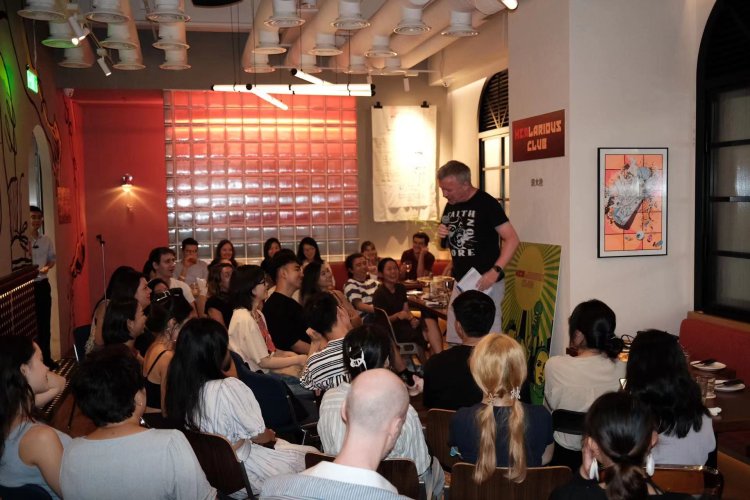Flowing From the Source: Ganges Founder Hetal Hemnani
Back in 2005, Pune (Maharashtra) native Hetal Hemnani opened the first branch of Ganges Indian Restaurant on Haidian District’s Chengfu Lu. Since then the business has grown and expanded, and Ganges’ four branches around town serving distinctive and authentic Indian offerings have been a welcome addition to Beijing’s pantheon of South Asian cuisine options. Mrs. Hemnani dishes to Agenda on some of the delicious details of Ganges’ auspicious progression.
How would you describe the current state of dining in Beijing? How do you maintain a well-received, quality product?
The dining scene in Beijing is becoming more and more dynamic. There are always new restaurants and cuisines arriving on the scene. The restaurant industry here reflects Beijing’s international diversity – not only do we see more commonplace Japanese or Italian restaurants, we also see that the cuisines of countries whose cuisines are less well-traveled, such as Greece and Portugal, are really finding increasing culinary representation.
In India hospitality is a big thing. There is a saying “a guest is like a god.” To stay consistently on top with what we are trying to do, our main priority is first and foremost to maintain the highest quality of our curries, naan and other Indian specialties. We are always seeking ways to make our food taste better and more authentic, so that our customers will be able to enjoy a sumptuous gastronomical dining experience every time. In addition, we continuously unroll new dishes for our menu.
How does your menu differ from that of other Indian restaurants in Beijing?
Many restaurants outside of India are North Indian. What you get is typical Northern Indian cuisine. But since India is so large, it has many distinctive flavors. At Ganges we try to serve as diverse a range of Indian flavors as possible. The result is that our menu features not only popular dishes from the North or the South, but a pan-Indian selection representing not only North, South, East and West, as well as many culinary sub-regions and snacks. For example, one typical Mumbai street food is batata wada – a chickpea-based snack with potato filling. This is a kind of street food that has only become popular within the last five to seven years. We want to serve things like this to help people get a taste of what is really going on in India. Another example is that recently we thought we were missing a taste of Eastern India, so we added King Prawn Korma – a very simple dish, but delicious in a distinctive eastern style.
Once people have tried all of the most common Indian dishes, we’d like to offer them the option here for something new and different the second time around.
What are the typical differences between India’s regional cuisines?
There are definitely a total of six or seven distinctive cuisines throughout the subcontinent, including great diverse and distinctive flavors in the East and in the West, all of which we try to represent on our menu at Ganges. For example, in the East they have a lot of great fish and prawn cooked with local produce such as mustard, coconut, vegetables, lentils and rice.”
Meanwhile, in the West you have Mumbai – a true melting pot in every way, perhaps especially with food – which produces lots of popular snacks and street food.
Broadly speaking North and South Indian are the most important culinary categories, because you see the staple food preference – wheat based staples in the North and rice in the South – break down along these lines.
North Indians in certain regions (e.g. Kashmir) can use a lot of cream and yogurt with generous sprinklings of cashews and dried fruits. Naan, roti breads and kulchas are the staple diet in North India, where coriander, red chillies, garam masala and turmeric are the popular spices. Common dishes from Northern India especially Punjab that many people are familiar with include Tandoori chicken and Chole.
Rice and lentils are more popular among South Indians, and their food tends to be hotter and spicier than that of their Northern neighbors. They use spices such as chillies, tamarind and mustard in their curries , as well as coconut. Well-known South Indian dishes include dosa and idli, which are like Indian versions of pancakes served with sambar or rasam soup. Sauces are also thicker in the North because they have to dip bread in the sauces!
Which three curries on the menu do you consider must-tries?
For diners that are trying Indian food for the first time: try the butter chicken, palak paneer and lamb roganjosh.
For someone with a more advanced appreciation and familiarity with Indian Cuisine, we recommend dishes like the stir-fried garlic prawn (a contemporary dish), or some of the special popular street snacks we offer such as Batata Wada.
Alternatively, if you have tried naan and garlic naan many times, for a change of pace you could try the Tawa Chapatti (homestyle whole wheat Indian bread) or maybe the softer Lachha paratha, which is whole wheat-based and made with a bit of ghee (an Indian butter). Both the Tawa Chappati and Lachha paratha are great for digestion.
We also have a few Indian Chinese dishes that customers should try, like the Manchow soup and the Gobi (cauliflower) Manchurian.
What have you discovered about the Chinese taste for Indian food?
We’ve seen that Chinese people often hold a misconception that Indian curries are too spicy and/or too heavy. But since we serve authentic Indian food, we don’t adjust our menu to the Chinese palate; we don’t want to water down our curries and make them less flavorful. Instead, we try to educate and help our Chinese customers understand that Indian food is more flavorful than spicy. We have discovered that once we get our customers to try the food, they are instantly hooked.
For those less familiar with Indian cuisine, what are its distinguishing traits and specialties?
Indian food is distinguished by the slow-cooked infusion of many flavors, and as a result it takes a lot of time and effort to prepare. The main feature of Indian food is the different spices that we use, which are called “masala” – anywhere from ten to 15 different spices may be cooked together for a particular curry. Indian food is in fact well-suited for the health-conscious, because all the elements combine to form a nutritious, complete meal. You have proteins in the form of the meats and lentils in the curries along with carbohydrates in the naan and rice, vitamins in vegetables. Spices like turmeric have curative effects and are said to have anti-cancer, antioxidant properties, while cumin aids digestion.
What are some of your favorite restaurants in Beijing?
We like to go to Maison Boulud and Ristorante Sadler by Qianmen.
Starting quite recently, Ganges has begun to offer a unique selection of Indian desserts. Please tell us more about mithai.
Indian sweets, which are called mithai, are usually milk-based and sugary and often feature the fragrance of rose or saffron. In Indian culture desserts are a necessity for any celebration – birthdays, weddings, or Diwali, for example. In India, a typical mithai shop is frequented once a week by every family.
We noticed that Indian restaurants in Beijing don’t offer many mithais at all, most likely because the process of making Indian desserts is very time-consuming – it can take up to one day to make one type of dessert. Many desserts require their own kitchen and chef to create. The kalakand, for example takes at least five to seven hours to make. The chef condenses five liters of milk into one liter, before adding saffron and rose and other ingredients. It is a high patience job that only specialty chefs take on.
At Ganges, we were very fortunate to find an excellent mithai chef in India and bring him over. We are able to make the ten most popular types of sweets, including cashew fudge (kaju katli), milk cake (kalakand), Chickpea-based sweet balls (motichur ladoo),and Ras Malai (cottage or riccotta cheese soaked in sweetened, thickened milk delicately flavored with cardamom).
Ganges Indian Restaurant Daily 11am-11pm. 1) S93-3, The Village at Sanlitun, 19 Sanlitun Lu, Chaoyang District. (6416 0181/6121); 2) 5, Hairun International Apartment, 2 Jiangtai Lu, Chaoyang District. (5135 8353); 3) 138A, B1/F, The Place, 9 Guanghua Lu, Chaoyang District. (6587 2999); 4) 13, Sancaitang Bldg, 160 Chengfu Lu, Haidian District. (6262 7944) www.ganges-restaurant.com 恒河印度餐厅, 1)阳区三里屯路19号三里屯VillageS93-3号;2)阳区将台路2号海润国际公寓底商5号;3)阳区光华路9号世贸天阶地下1层138A;4)海淀区成府路160号三才堂写字楼1层13号
Ristorante Sadler Daily (closed Mondays) 11.30am-2pm, 6.30-10.30pm. Ch’ien Men 23, 23 Qianmen Dongdajie, Dongcheng District. (6559 1399) 东城区前门东大街23号
Maison Boulud a Pekin Mon-Fri 11.30am-2pm, 6-10.30pm; Sat-Sun 11am-4pm, 6-10.30pm. Ch’ien Men 23, 23 Qianmen Dongdajie, Dongcheng District. (6559 9200) 东城区前门东大街23号
Related stories :
Comments
New comments are displayed first.Comments
![]() Harsh
Submitted by Guest on Mon, 03/19/2012 - 12:57 Permalink
Harsh
Submitted by Guest on Mon, 03/19/2012 - 12:57 Permalink
Re: Flowing From the Source: Ganges Founder Hetal Hemnani
Thx mrs. Himani,.
I am an indian student living in beijng last 1 year. still dnt know abt u.
i gr8 if i meet u in beijing.
because i also at home made lots of indian dishes and serve to chiness and other countries people.
i like to cook. so i cook.
i have lot of indian spices at home too
contect me also on 15210311734
Validate your mobile phone number to post comments.






